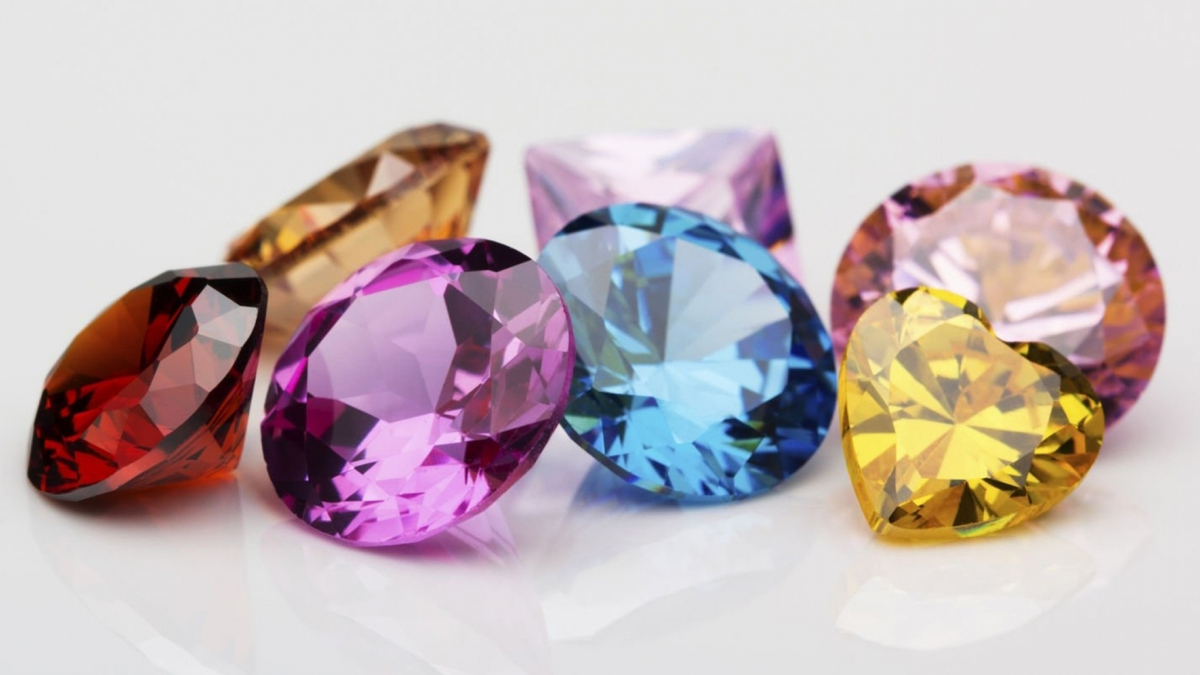A rough diamond that has been "grown" in a laboratory comes from a pure carbon crystal, or "diamond seed." The diamond is exposed to HPHT, just like mined diamond deep in the ground. However, this process occurs in a much shorter amount of time, using advanced and expensive machines.
A rough HPHT diamond can only grow so much. Once it reaches its limit, the same methods used to cut and polish mined diamonds can be applied.
New technology could revolutionize the diamond industry by allowing us to generate any color of diamond. This would make it possible to have jewelry with any color diamond desired.
Lab-grown diamonds are also known as man-made diamonds. They are created by growing carbon seeds in a lab over the course of a decade. Diamonds that are colored and created in a lab are also a possibility.
How Do Colored Lab Diamonds Work?
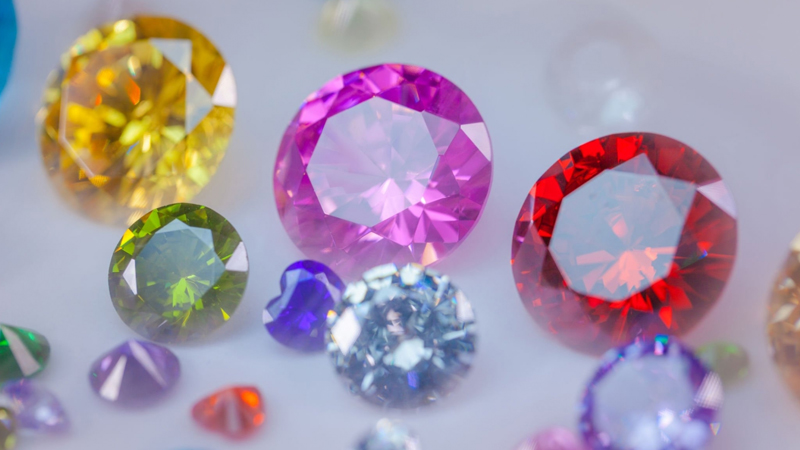
Colored lab grown diamonds are real diamonds with a stunning, bright hue, such as pink, blue, or yellow. Scientists produce multicolored diamonds in a high-tech laboratory. They use a technique that precisely mimics how nature makes these diamonds beneath the earth.
With a variety of forms, cuts, and other characteristics, this technique creates high-quality colored lab diamonds. The highest quality diamonds come with all these properties.
Colored diamonds have become popular. People may prefer certain colors because they look attractive. Others appreciate the idea of having unique diamonds that reflect their personalities.
1. Yellow Diamonds
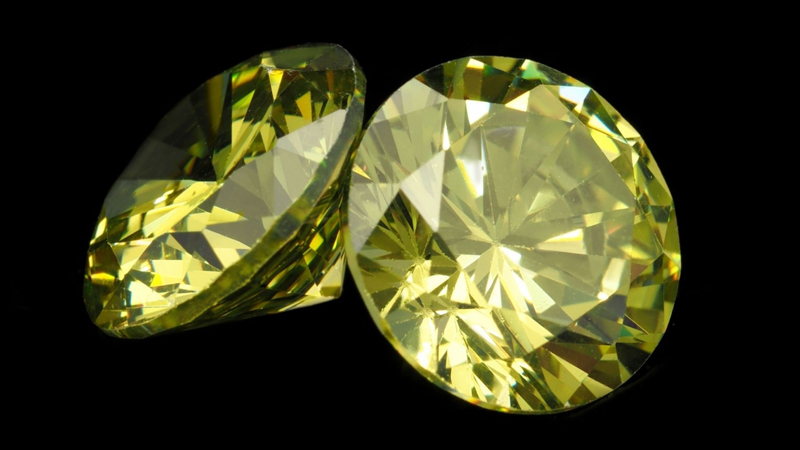
You'll notice that a fancy yellow diamond is significantly brighter than any other shade of yellow when you look at it. Although it is more brilliant than a typical yellow diamond, it is not as bright as a white diamond. This is due to the use of cutting-edge technologies to enhance the yellow color.
Lab created diamonds are colored naturally yellow by scientists. Nitrogen trace elements are added during the growth of diamonds. This enables them to reach their full potential. The intensity of the yellow tint depends on the overall amount of nitrogen used.
Beautiful bright yellow color is produced by small amounts of nitrogen. While significant numbers take on a gorgeous golden-yellow color.
2. Pink Diamonds
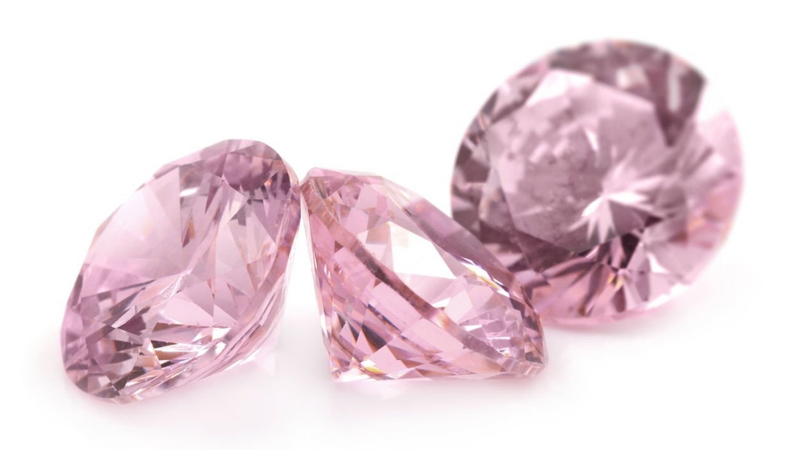
A pink diamond's body color and tone are the two key aspects that affect its color. The depth of the hue determines the body color. This hue's lightness or darkness is referred to as its tone.
A jeweler's loupe or a magnification of at least 10x can be used to evaluate a diamond. This will help identify its characteristics.
When developing pink diamonds in a lab, researchers mimic natural processes. We observe a distinct, natural pink color in earth mined diamonds. This color can be replicated using one of three scientific techniques. Intense heat, changed pressure, irradiation, or any combination of the three are used in these three techniques.
3. Blue Diamonds
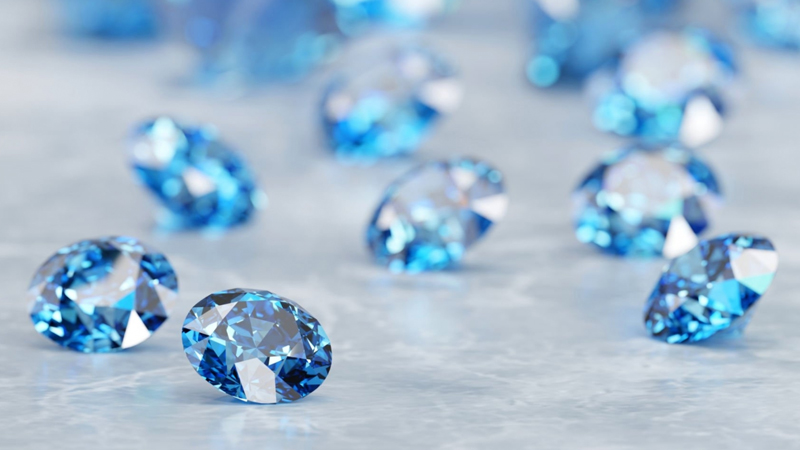
Boron is the source of the color in blue lab-grown diamonds. Blue diamonds develop much deeper under the Earth's surface than other diamonds.
A comparison can be made to the famous Hope Diamond. It is currently on display at the Smithsonian National Museum of Natural History. This indicates that the old seafloor is where they most likely acquired their distinctive boron-blue coloring.
As the carat diamond grows, boron is added, giving blue lab-grown diamonds their hue exactly as they do in nature. Boron is a sparkling light blue colorant in small concentrations and a brilliant deep blue colorant in big proportions.
4. Purple Diamonds
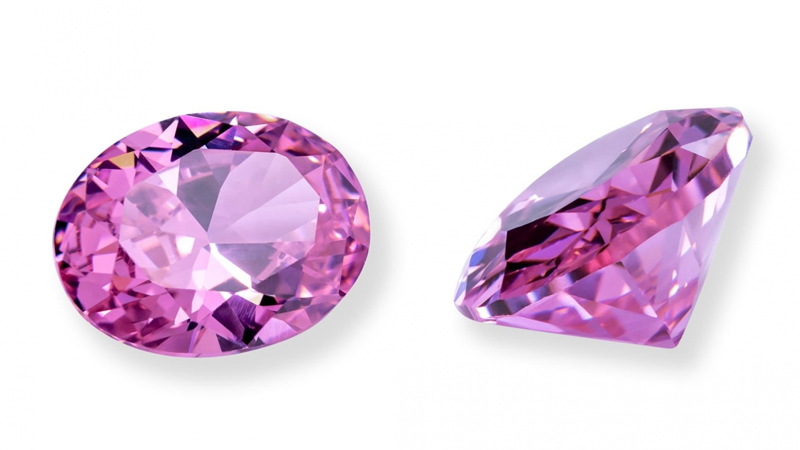
Purple diamonds are a relatively recent development. However, they are quickly becoming some of the most sought-after diamonds in the industry.
Only in natural diamonds may purple diamonds be exceptionally uncommon and valuable. However, purple diamonds are now commonplace in lab-grown diamonds. Some individuals even contend that purple diamonds are superior to black diamonds.
5. Red Diamonds
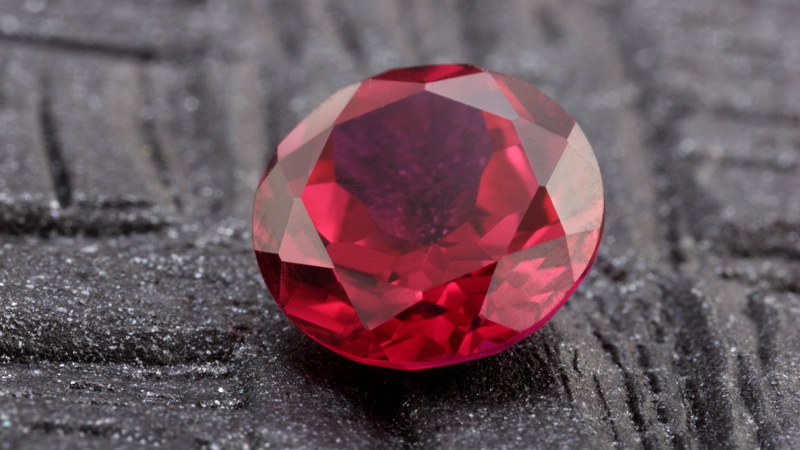
Red diamonds are made in a lab, much like other fancy colored diamonds. Brown, orange, or purple secondary colors are frequently present in red diamonds. Lab-created fancy red diamonds are distinguished by intense red color saturation.
Red diamonds that have been mined hardly ever contain it. These are the jewels that will probably capture your attention.
Rare species are not common in nature. They are usually found in only a few places around the world. Therefore, they are incredibly rare.
What is a Colorless Diamond?
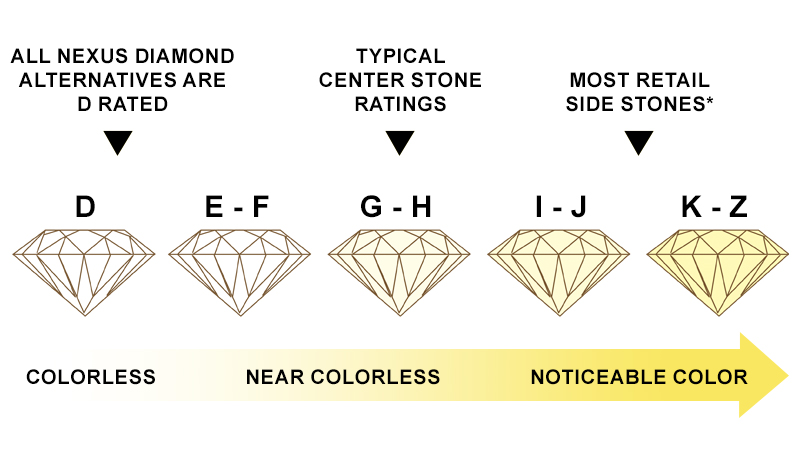
A colorless diamond's characteristics go beyond just its appearance. A colorless diamond and a near colorless diamond are difficult to tell apart with the naked eye. However, there are major differences between them, especially in terms of cost.
Diamonds color grading come in a range of colors. The highest color grade is D, which is colorless, and the lowest is Z, which is highly saturated.
If a diamond has a D, E, or F rating, it is regarded as colorless. A diamond with a G-J grade is considered "near colorless" and emits a faint hint. On the other hand, a diamond with a K-M grade is regarded as "faint" and displays visible color.
Why opt for Fancy Color Lab Grown Engagement Rings?
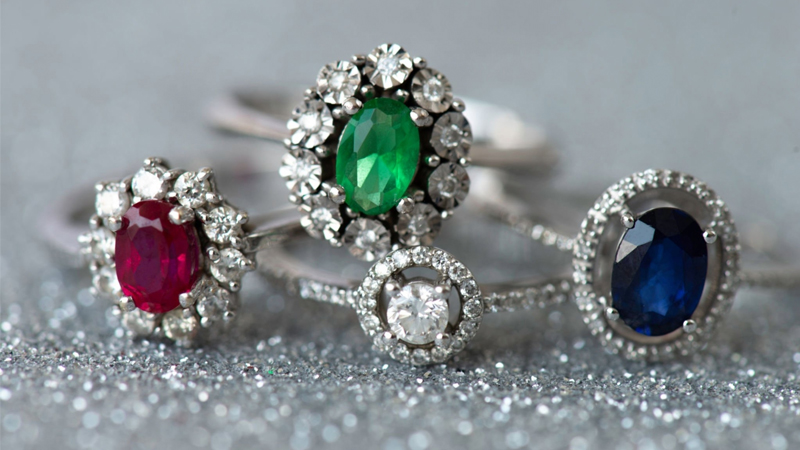
Fancy color lab grown diamond engagement rings are a great choice for a variety of reasons. Colored diamond jewelry in white, yellow and rose gold is versatile and looks great with any style. It ranges from sparkling halo settings of a round cut center stone to strong pink designs.
Additionally, you can shop guilt-free because to their lack of conflict. With the knowledge that you supported ethical and responsible buying; you can buy your favorite ring! Furthermore, lab-grown diamonds are the secret to upgrading your jewelry collection without going over budget.
Fancy colored lab-grown rings satisfy all the criteria for ethical purchasing, variety, and affordability.
Prices of Colored Diamonds
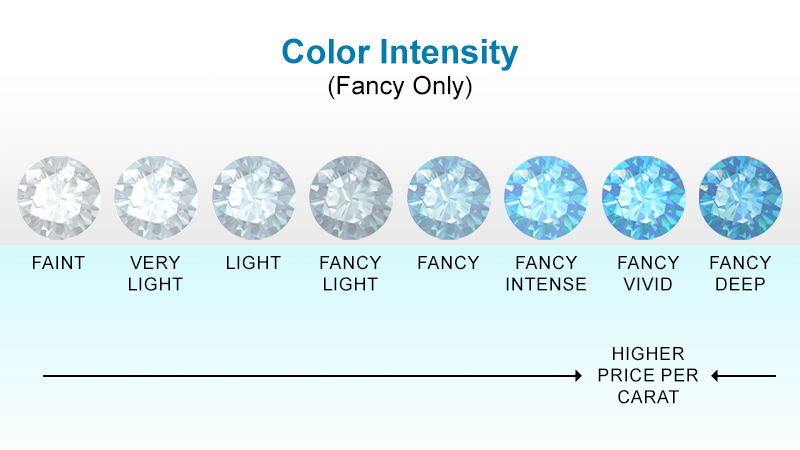
A colored diamond's price is determined by factors other than its color. Additionally crucial factors include color saturation and the consistency of color over the gem's face. Pure hues tend to be more appealing than ones with modifying colors. The size of the gemstones and the level of cut quality are equally crucial, just like with all diamonds.
In the last ten years, both natural and lab grown colored diamonds that have undergone treatment have increased in popularity. These diamonds are not rare, and their prices are lower than those of naturally colored diamonds.
Brown, grey, or black colored diamonds are the most reasonably priced colored diamonds. These hues are the least expensive and rarest among colored diamonds. These dazzling diamonds frequently go for many thousand dollars per carat weight. They occasionally trade for less than diamonds with comparable size, cut, and clarity that range from D to Z in color.
The next rarest diamonds are yellow ones. Compared to brown, grey, and black diamonds, they are rarer. Due to their outstanding luster, fire, and brightness, many people believe that yellow diamonds are the most attractive yellow stone.
In sizes under two carats, stunning diamonds with a fancy yellow color are frequently available for $5,000 to $10,000 per carat. Many people are unaware that yellow diamonds are a choice in this price range.
Conclusion
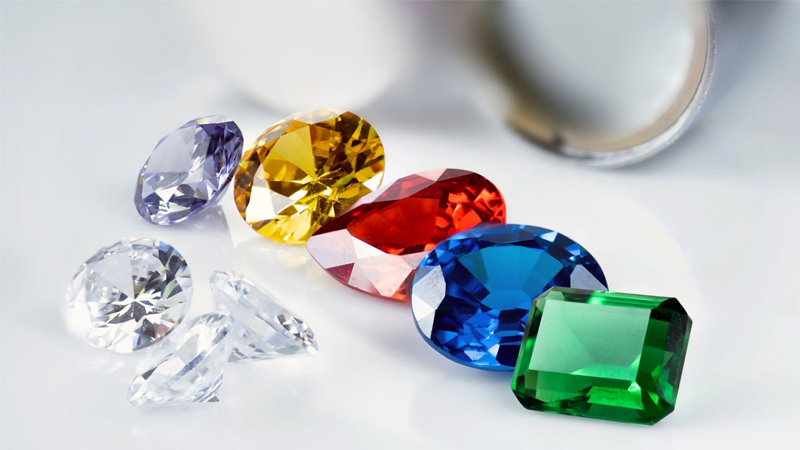
There are multiple colors available. If you like the idea of a diamond with a bright hue, one of these colors may be perfect for you. We can comprehend the various colors by comparing the colors of lab-grown diamonds. They are moreover just as stunning as colored mined diamonds, inexpensive, and sustainable.
The only distinction is how people view their worth and place of origin. You can choose the jewelry you like knowing that there are not any wrong or right decisions to make.
It is now possible to purchase a real-colored lab-grown diamond. This diamond has the same brilliance and durability as a mined diamond, but at a lower cost. Thanks to the existence of lovely colored lab diamonds, you have the option to choose this diamond. Hence there are many benefits of lab grown.

